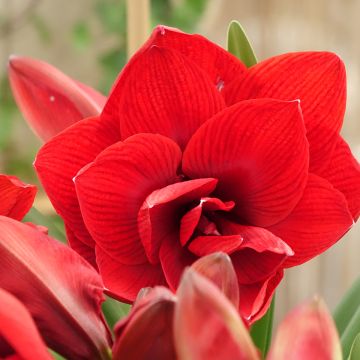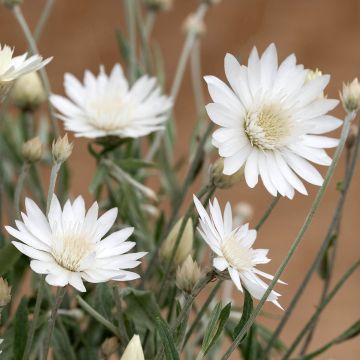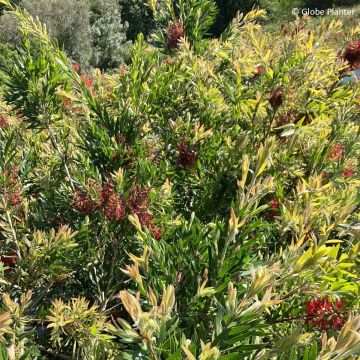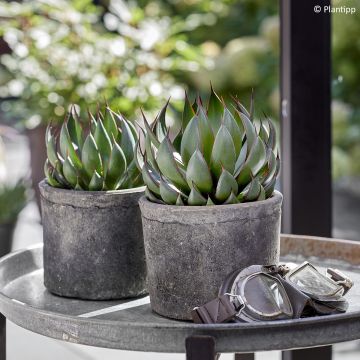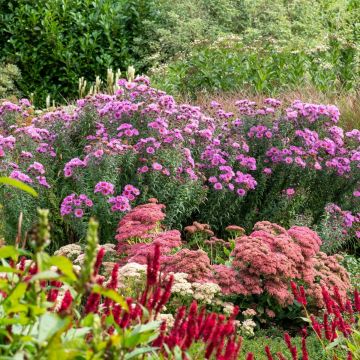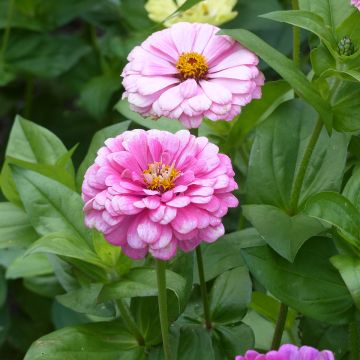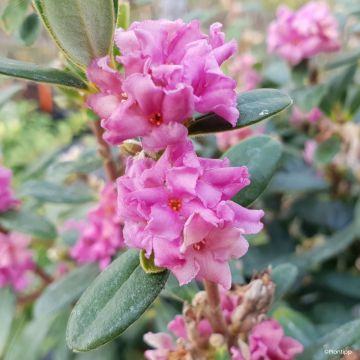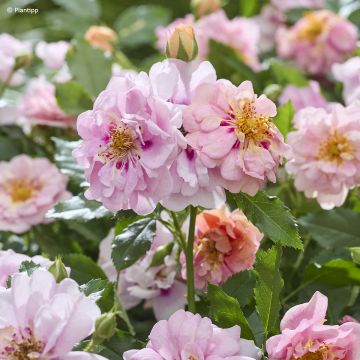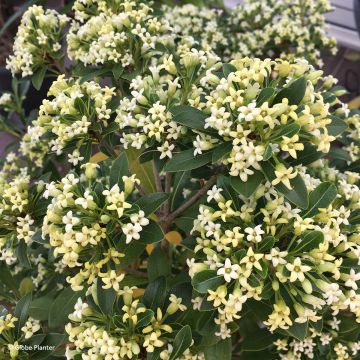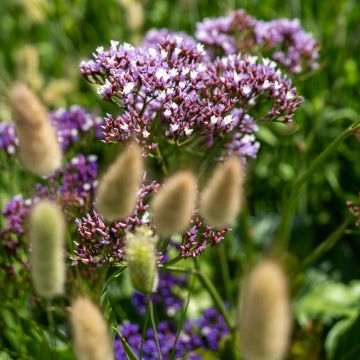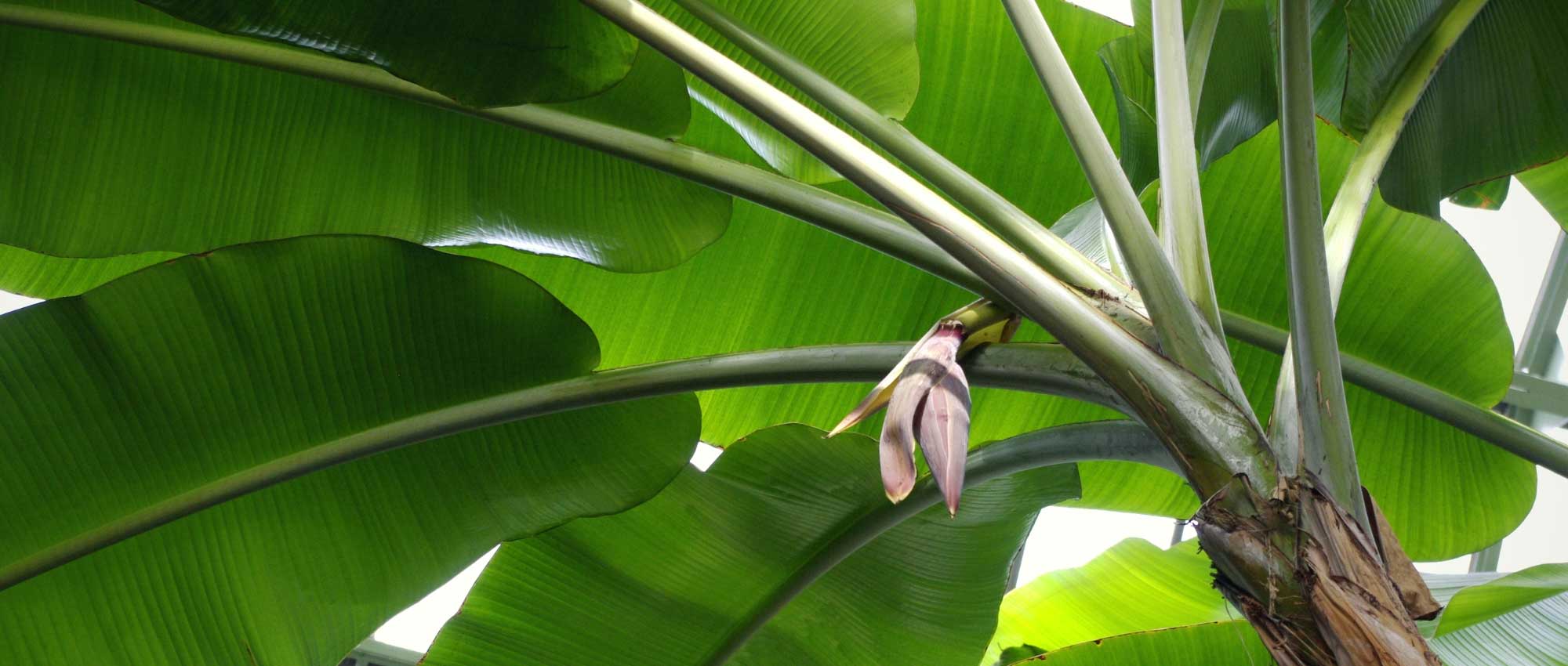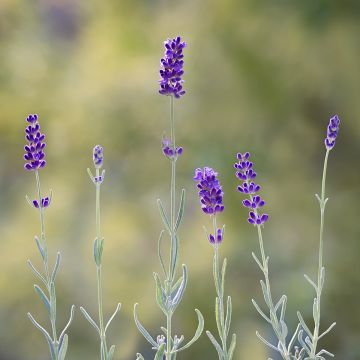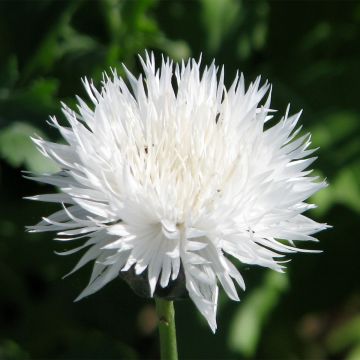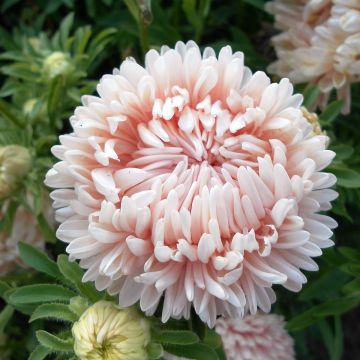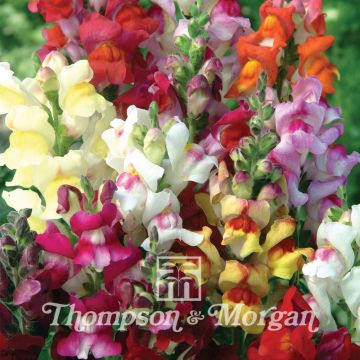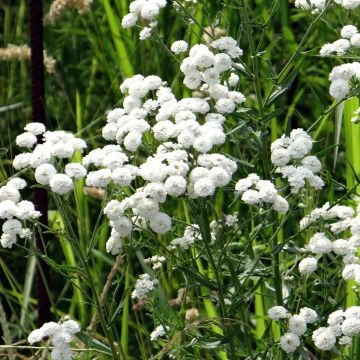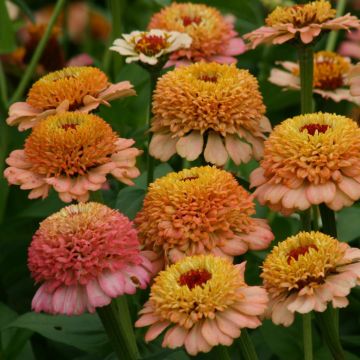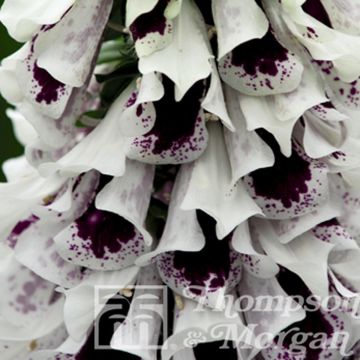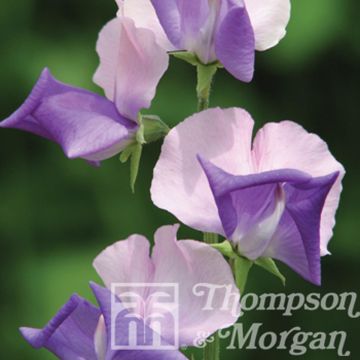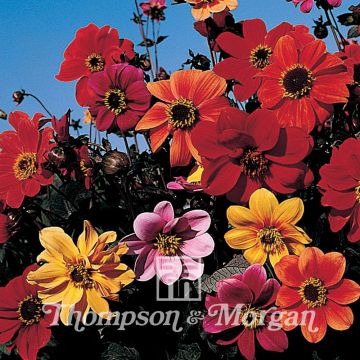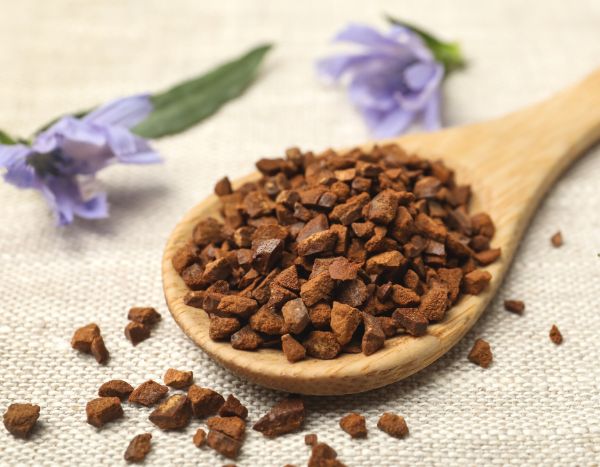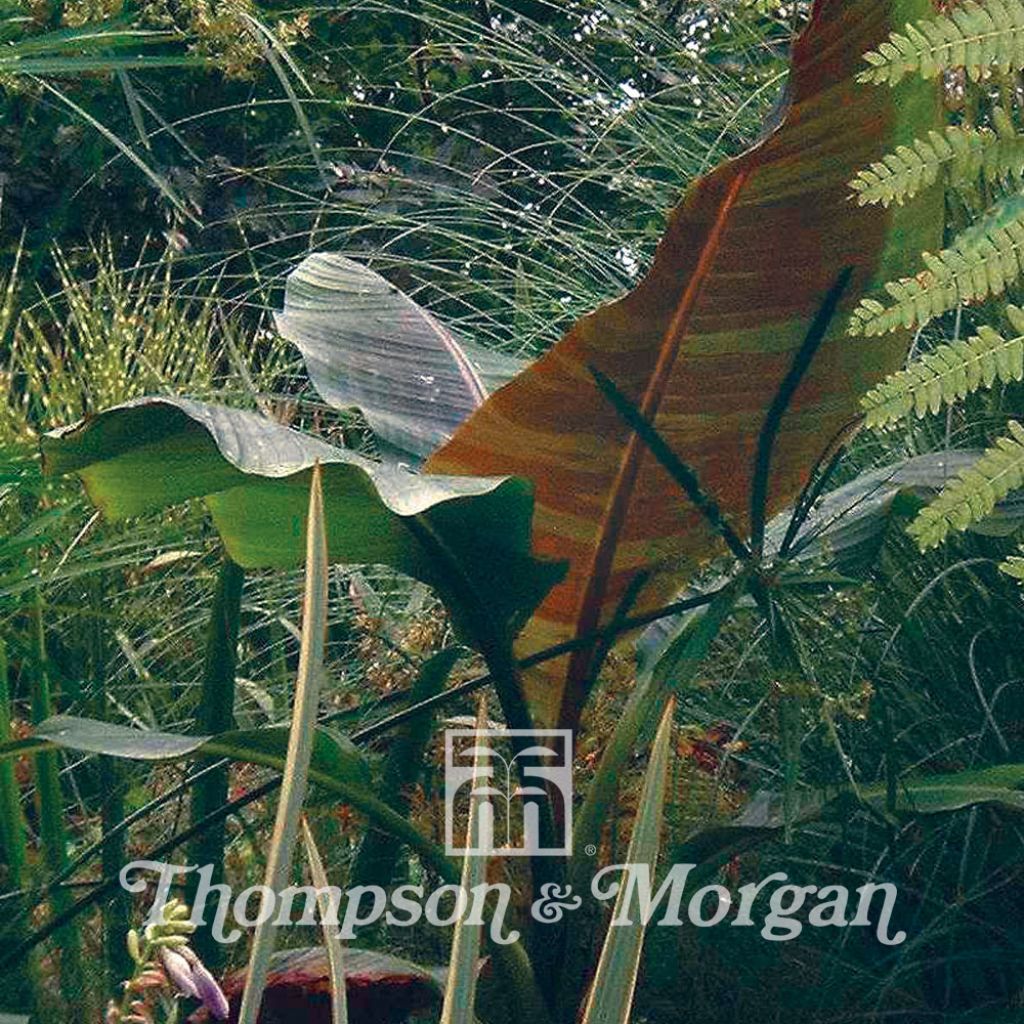

Musa Sikkimensis
Musa sikkimensis - Hardy Banana
Musa sikkimensis
Darjeeling Banana, Sikkim Banana, Himalayan Banana Tree
2 magnificent Musa sikkimensis
Christelle H., 03/10/2017
Special offer!
Receive a €20 voucher for any order over €90 (excluding delivery costs, credit notes, and plastic-free options)!
1- Add your favorite plants to your cart.
2- Once you have reached €90, confirm your order (you can even choose the delivery date!).
3- As soon as your order is shipped, you will receive an email containing your voucher code, valid for 3 months (90 days).
Your voucher is unique and can only be used once, for any order with a minimum value of €20, excluding delivery costs.
Can be combined with other current offers, non-divisible and non-refundable.
Why not try an alternative variety in stock?
View all →This plant carries a 6 months recovery warranty
More information
We guarantee the quality of our plants for a full growing cycle, and will replace at our expense any plant that fails to recover under normal climatic and planting conditions.
Does this plant fit my garden?
Set up your Plantfit profile →
Description
The Himalayan banana tree, also known as Musa sikkimensis, is a plant adapted to harsh high-mountain winters, which is a testament to its hardiness. Still very rare in our gardens, this tree species develops a massive trunk tinged with red and remarkable foliage, composed of large green leaves striped with burgundy, on the back of which is a similar dark red tone. It blooms in summer with pink bract flowers which are followed, in a warm climate, by inedible fruits. Fantastic for exotic decor, its growth rate is such that it already forms a beautiful plant in one season. To be grown in large containers, on the terrace, as an indoor plant, or in open ground, in a sunny location. This beautiful plant requires deep, fertile, fresh but drained soil.
This banana tree, also known as Musa hookeri, or Darjeeling banana, is a giant herbaceous perennial, equipped with a tuberous rootstock, from the Musaceae family. It grows in the forests of the Himalayas, at altitudes of about 1700 m (5577 ft 5 in), sometimes up to 2000 m (6561 ft 8 in). This plant is semelparous, or annual, meaning it dies after the ripening of the fruit, and new trunks appear each year from buds carried by the rootstock. It develops a pseudo-trunk (stipe) green tinged with red, constituted by the petiolate leaves rolled and tightened around each other, but never producing wood. The leaves spread their immense lamina in a fan shape, quickly forming a beautiful clump of 3.50 m (11 ft 6 in) in height and 3 m (9 ft 10 in) in width.
Its ornamental interest lies in its leaves, light green striped with burgundy-purple of tropical charm. They measure between 1.5 and 3 m (4 ft 11 in and 9 ft 10 in) long. In a warm climate, it produces yellow to cream flowers in summer, surrounded by pink bracts, which are followed, in a warm region, by fruits with a sweetish but hard pulp, of no culinary interest, resembling bananas. In winter the leaves disappear at the first frosts but the plant will grow again from the base the following spring. Its hardiness is quite good (up to -12°C (10.4 °F)) for well-established specimens. It is preferable to protect the younger plants from heavy frosts.
Still little used in European gardens, the Himalayan banana tree can be used in mass planting, as a standalone or planted in a large pot on the terrace, or in the conservatory. In a pot, it is necessary to pay attention to watering and protect the pot in winter. This remarkable plant, like cannas, bamboos, giant miscanthus or castor beans, gives a highly exotic look to temperate gardens.
Flowering
Foliage
Plant habit
Botanical data
Musa
sikkimensis
Musaceae
Darjeeling Banana, Sikkim Banana, Himalayan Banana Tree
Himalayas
Other Thompson and Morgan seeds
View all →Planting and care
When you receive the seeds, sow them right away. Put them 2.5 cm (1 in) deep in pots or trays with moist compost. Keep the pots or trays in a warm place or propagator, with a constant temperature between 20 and 25°C (68 and 77°F). Keep the surface of the compost moist but not waterlogged. Don't block light after sowing, as it helps germination. You might have to wait between 1 and 6 months for the seeds to germinate, which may happen slowly and not all at once.
Once the young plants are big enough to handle, move them into pots or trays that are 7.5 cm (3 in) big. Be careful not to damage the root system. They need to be grown in a bright place. You can put them outside or plant them in open ground during summer. In the first few years, protect them from frost. Give them less water in winter, and don't worry if the leaf tips turn yellow. It's normal.
If the seeds don't germinate, it might be because they are in dormancy. To fix this, mix sand and water, then put them in the refrigerator at 5°C (41°F) for at least 2 months.
Banana plants need full sun or partial shade. They should be grown in cool, rich, deep, well-drained soil and protected from the wind.
Sowing period
Intended location
Planting & care advice
-
, onOrder confirmed
Reply from on Promesse de fleurs
Haven't found what you were looking for?
Hardiness is the lowest winter temperature a plant can endure without suffering serious damage or even dying. However, hardiness is affected by location (a sheltered area, such as a patio), protection (winter cover) and soil type (hardiness is improved by well-drained soil).

Photo Sharing Terms & Conditions
In order to encourage gardeners to interact and share their experiences, Promesse de fleurs offers various media enabling content to be uploaded onto its Site - in particular via the ‘Photo sharing’ module.
The User agrees to refrain from:
- Posting any content that is illegal, prejudicial, insulting, racist, inciteful to hatred, revisionist, contrary to public decency, that infringes on privacy or on the privacy rights of third parties, in particular the publicity rights of persons and goods, intellectual property rights, or the right to privacy.
- Submitting content on behalf of a third party;
- Impersonate the identity of a third party and/or publish any personal information about a third party;
In general, the User undertakes to refrain from any unethical behaviour.
All Content (in particular text, comments, files, images, photos, videos, creative works, etc.), which may be subject to property or intellectual property rights, image or other private rights, shall remain the property of the User, subject to the limited rights granted by the terms of the licence granted by Promesse de fleurs as stated below. Users are at liberty to publish or not to publish such Content on the Site, notably via the ‘Photo Sharing’ facility, and accept that this Content shall be made public and freely accessible, notably on the Internet.
Users further acknowledge, undertake to have ,and guarantee that they hold all necessary rights and permissions to publish such material on the Site, in particular with regard to the legislation in force pertaining to any privacy, property, intellectual property, image, or contractual rights, or rights of any other nature. By publishing such Content on the Site, Users acknowledge accepting full liability as publishers of the Content within the meaning of the law, and grant Promesse de fleurs, free of charge, an inclusive, worldwide licence for the said Content for the entire duration of its publication, including all reproduction, representation, up/downloading, displaying, performing, transmission, and storage rights.
Users also grant permission for their name to be linked to the Content and accept that this link may not always be made available.
By engaging in posting material, Users consent to their Content becoming automatically accessible on the Internet, in particular on other sites and/or blogs and/or web pages of the Promesse de fleurs site, including in particular social pages and the Promesse de fleurs catalogue.
Users may secure the removal of entrusted content free of charge by issuing a simple request via our contact form.
The flowering period indicated on our website applies to countries and regions located in USDA zone 8 (France, the United Kingdom, Ireland, the Netherlands, etc.)
It will vary according to where you live:
- In zones 9 to 10 (Italy, Spain, Greece, etc.), flowering will occur about 2 to 4 weeks earlier.
- In zones 6 to 7 (Germany, Poland, Slovenia, and lower mountainous regions), flowering will be delayed by 2 to 3 weeks.
- In zone 5 (Central Europe, Scandinavia), blooming will be delayed by 3 to 5 weeks.
In temperate climates, pruning of spring-flowering shrubs (forsythia, spireas, etc.) should be done just after flowering.
Pruning of summer-flowering shrubs (Indian Lilac, Perovskia, etc.) can be done in winter or spring.
In cold regions as well as with frost-sensitive plants, avoid pruning too early when severe frosts may still occur.
The planting period indicated on our website applies to countries and regions located in USDA zone 8 (France, United Kingdom, Ireland, Netherlands).
It will vary according to where you live:
- In Mediterranean zones (Marseille, Madrid, Milan, etc.), autumn and winter are the best planting periods.
- In continental zones (Strasbourg, Munich, Vienna, etc.), delay planting by 2 to 3 weeks in spring and bring it forward by 2 to 4 weeks in autumn.
- In mountainous regions (the Alps, Pyrenees, Carpathians, etc.), it is best to plant in late spring (May-June) or late summer (August-September).
The harvesting period indicated on our website applies to countries and regions in USDA zone 8 (France, England, Ireland, the Netherlands).
In colder areas (Scandinavia, Poland, Austria...) fruit and vegetable harvests are likely to be delayed by 3-4 weeks.
In warmer areas (Italy, Spain, Greece, etc.), harvesting will probably take place earlier, depending on weather conditions.
The sowing periods indicated on our website apply to countries and regions within USDA Zone 8 (France, UK, Ireland, Netherlands).
In colder areas (Scandinavia, Poland, Austria...), delay any outdoor sowing by 3-4 weeks, or sow under glass.
In warmer climes (Italy, Spain, Greece, etc.), bring outdoor sowing forward by a few weeks.






























